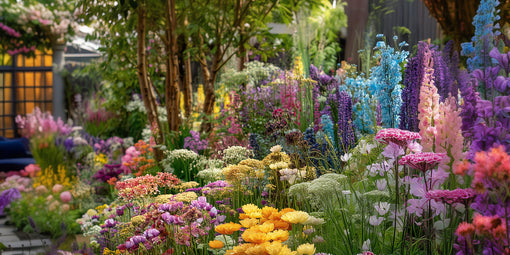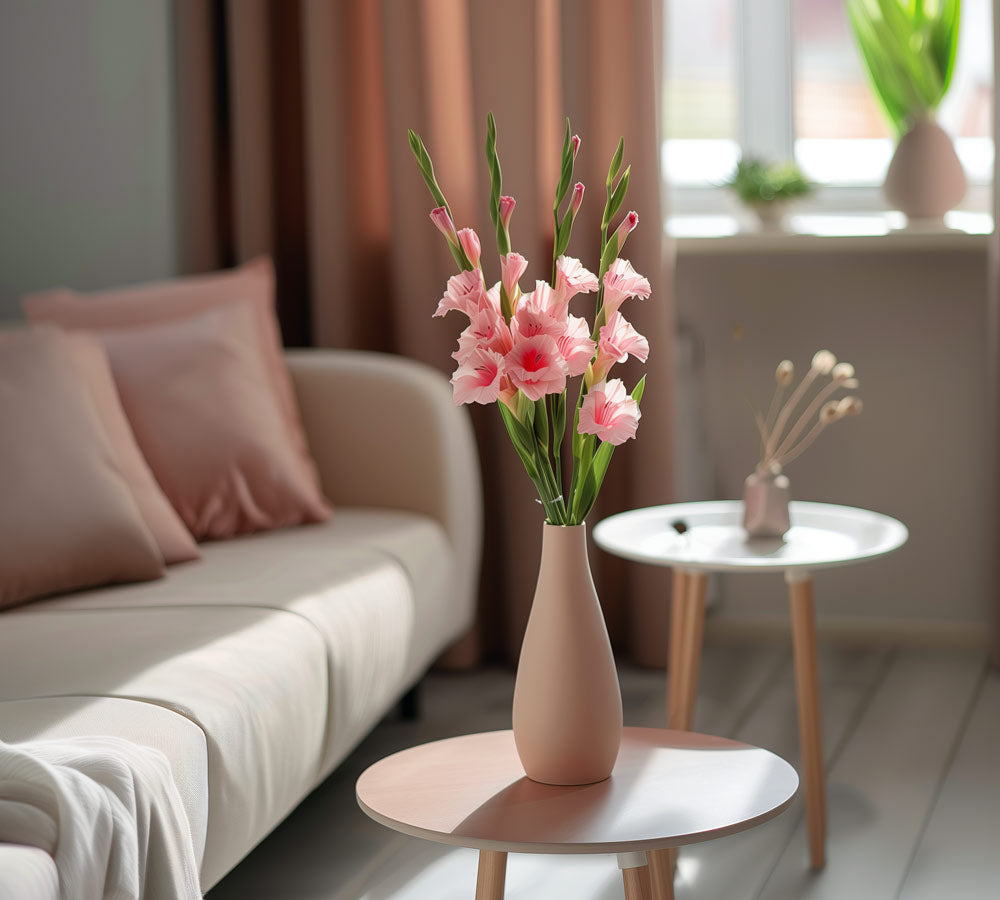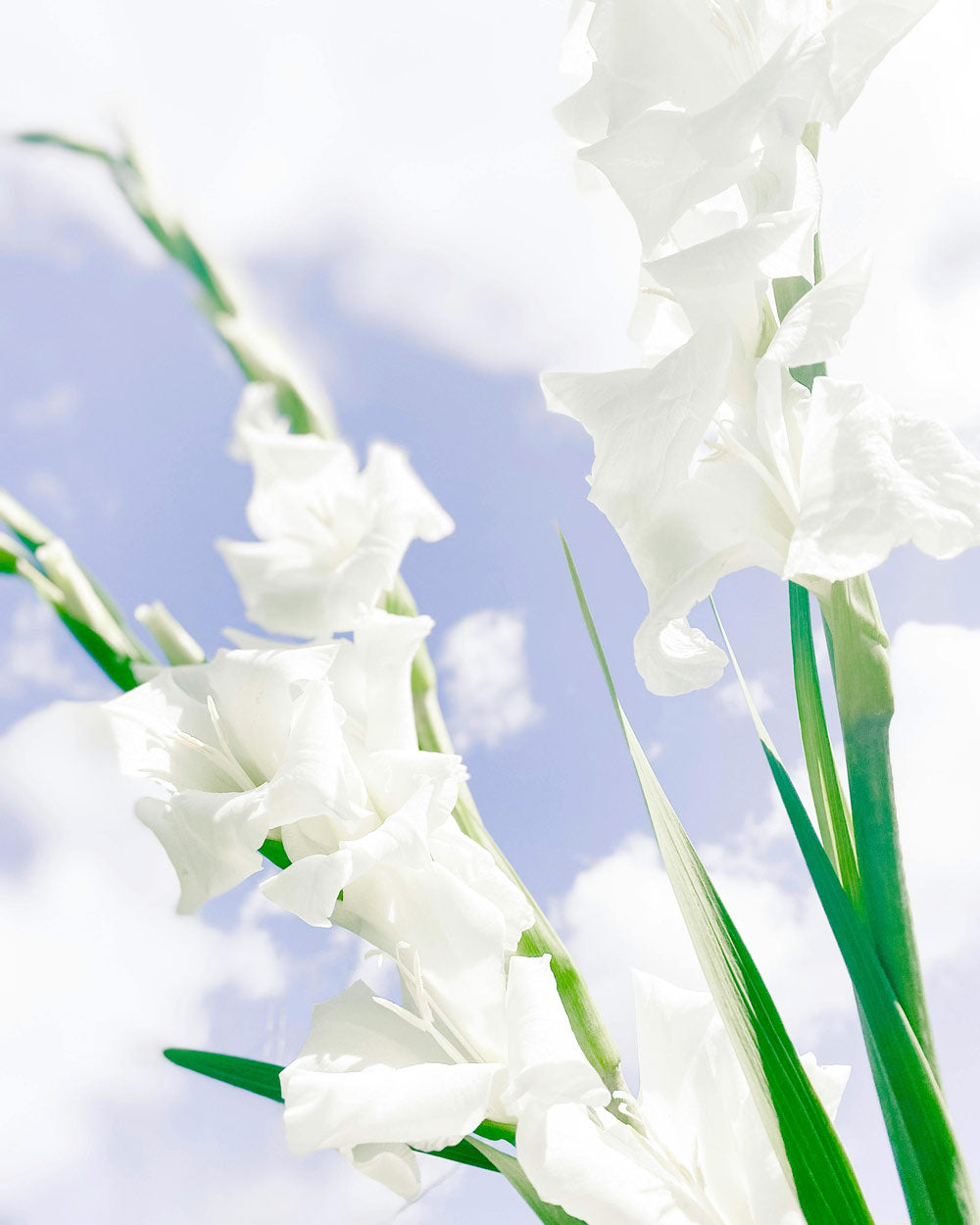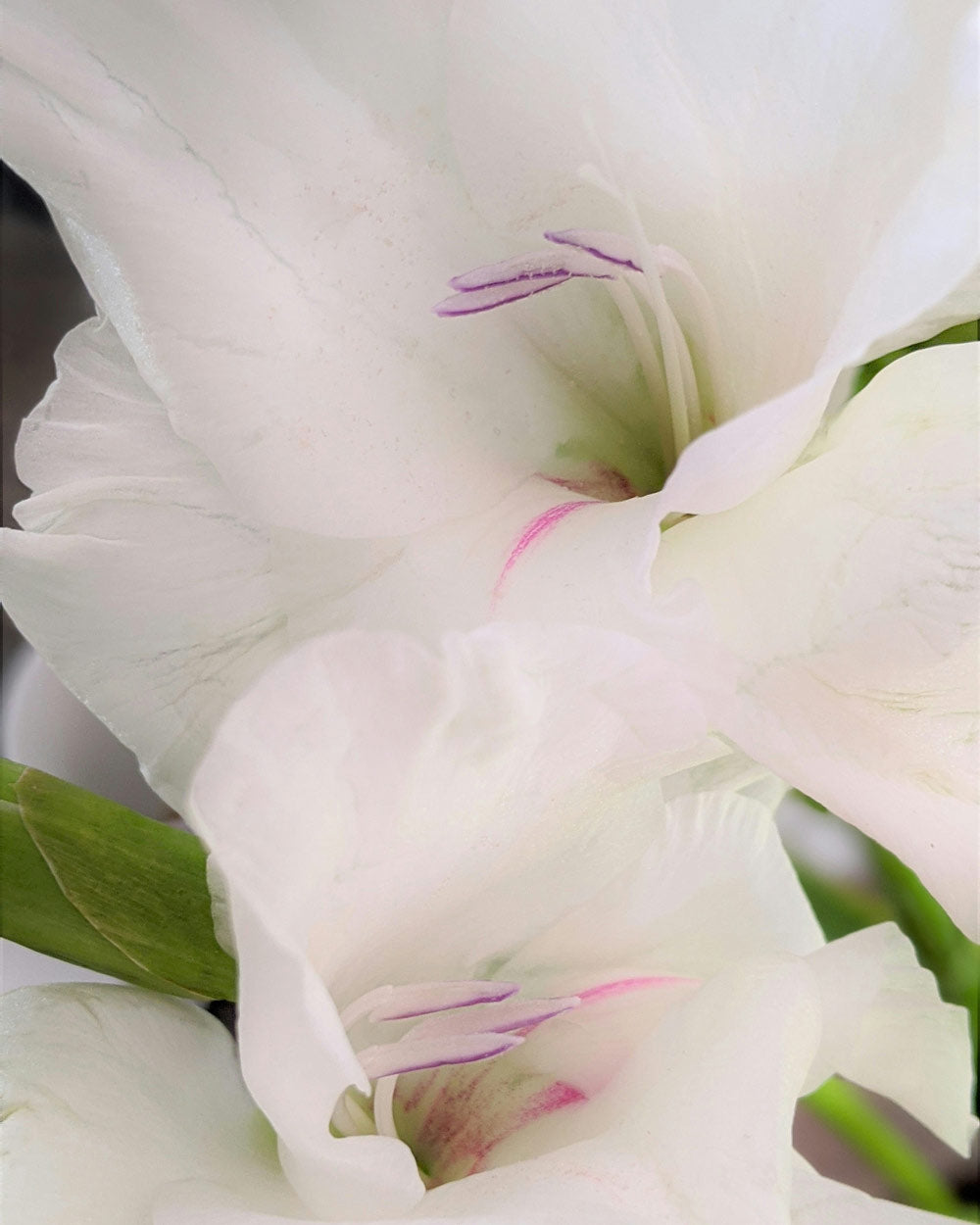
- Article published at:
Drawer menu

Hey there flower lovers! Are you ready to learn all about one of our favourite blooms? Today, we're diving into the wonderful world of Gladiolus flowers. There's just something about this special bloom. Maybe it's their striking appearance or the fact that they can grow to be over six feet tall!
Whatever it is, We're excited to share with you everything we know about Gladiolus flowers, from their physical characteristics to their symbolism and uses. So let's get started and explore this beautiful flower together!

First things first, let's talk about the looks of these gorgeous flowers. Gladiolus plants can grow up to six feet tall, which is taller than most of us! They have tall, slender stems that are lined with long, sword-shaped leaves.
At the top of the stem, you'll find a cluster of trumpet-shaped flowers that can be almost any colour you can imagine, from bold and bright to soft and pastel. Some varieties even have multiple colours on one flower, which is just stunning.
What's cool about Gladiolus flowers is that they grow from a corm, which is like a bulb but flatter, and can be easily propagated. So not only do they look amazing, but they're also fascinating to grow and care for!


Are you ready to get your hands dirty and grow some Gladiolus flowers? These beauties are actually quite easy to grow, as long as you give them the right conditions.
First things first, pick a sunny spot with well-draining soil. Plant the corms about 4 inches deep and 6 inches apart, with the pointed side facing up. Water them regularly, but don't overdo it, as they don't like to be too soggy. And don't forget to stake the stems as they grow taller to prevent them from falling over in the wind.
As for pests and diseases, Gladiolus flowers can be susceptible to thrips, spider mites, and a few other critters, so keep an eye out and treat as needed. With a little bit of TLC, you'll soon be rewarded with a stunning display of Gladiolus flowers in your garden or home. And for the record, there's nothing quite like the satisfaction of growing your own beautiful flowers!
Did you know that Gladiolus flowers have some pretty interesting symbolism and uses? For starters, they're the birth flower for August, which makes them a popular choice for birthday gifts and celebrations.
But that's not all! In the language of flowers, Gladiolus can represent strength, honor, and remembrance. They're often used in funeral arrangements as a tribute to the deceased.
And if you're looking to add some personality to your floral designs, Gladiolus can add a touch of drama and flair with their bold colors and towering height. You can use them as the focal point in a bouquet or as an accent in a mixed arrangement. Or, if you're feeling crafty, you can even use dried Gladiolus stems in wreaths and other DIY projects. The possibilities are endless!

You know what's even cooler than Gladiolus flowers? Fun facts about Gladiolus flowers! Here are a few that might surprise you:
See, Gladiolus flowers are more than just a pretty face. They're also full of fascinating facts and history that make them even more special.

We've explored the wonderful world of Gladiolus flowers, from their physical characteristics to their symbolism and uses, and even some fun facts thrown in. It's no wonder why Gladiolus flowers have captured the hearts of flower lovers around the world.
With their stunning appearance, easy cultivation, and deep symbolism, they truly are a flower worth celebrating. Whether you're adding them to your garden, crafting with them, or using them in a special occasion, Gladiolus flowers are sure to bring joy and beauty to your life. So go ahead and embrace the power of the sword-shaped flower and let Gladiolus brighten up your day!